Railroad Ties Garden Ideas: Creative Landscaping Tips
Gardening can be a rewarding way to transform your outdoor space, and using railroad ties offers both aesthetic appeal and practical benefits. These sturdy, recycled materials can enhance your garden’s structure and functionality in various creative ways.
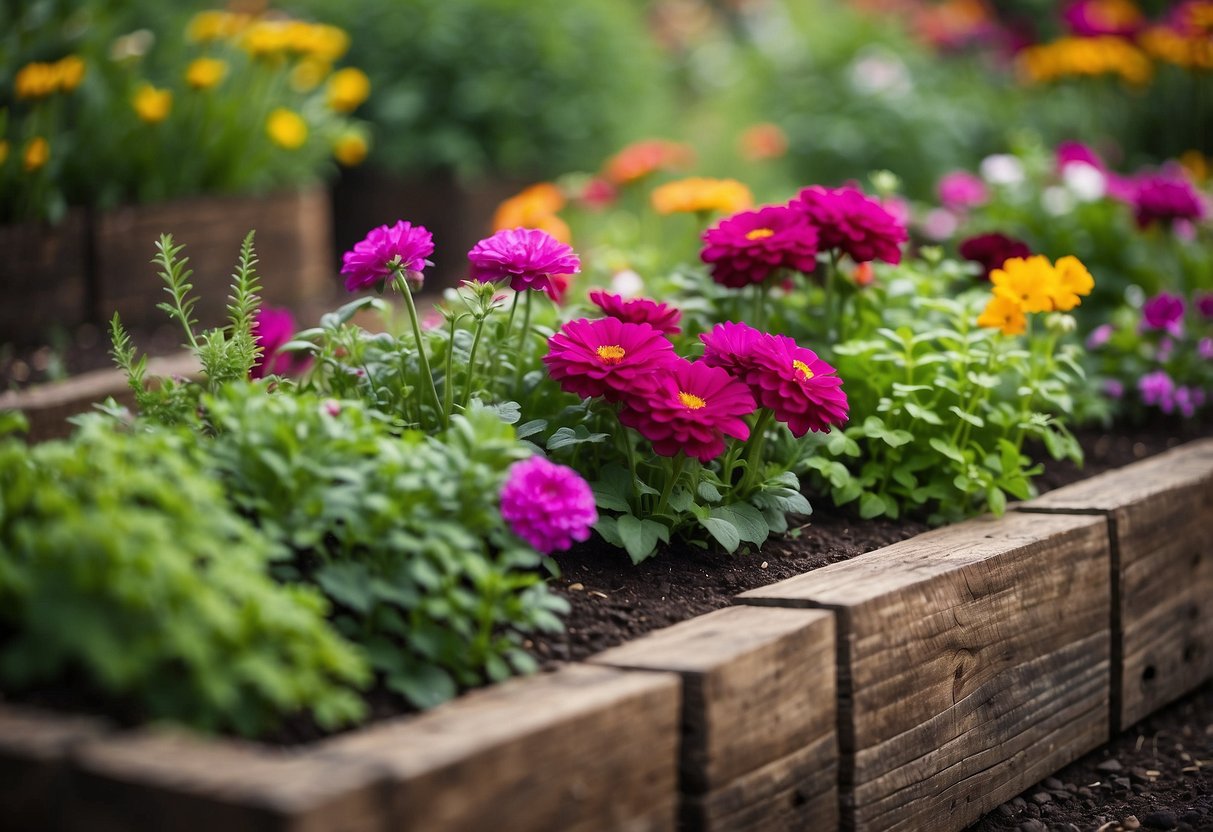
Are you looking for simple yet effective ways to spruce up your garden? Railroad ties might be the perfect solution. From building raised beds to crafting unique pathways, you can find endless possibilities to enhance your garden’s charm and usability.
1) Rustic Flower Bed Edges

Using railroad ties to edge your flower beds gives your garden a charming, rustic look. These thick wooden beams act as a sturdy barrier and add a bit of old-fashioned charm.
Instead of new ties, consider using reclaimed ones. Just make sure they’re not treated with harmful chemicals. This way, your garden stays safe and eco-friendly.
Stack the ties to get the desired height for your flower bed. The natural wood color blends well with most garden plants, giving a cohesive and inviting feel to your outdoor space.
For ideas on turning railway sleepers into garden edging, you can check out some creative railway sleepers garden edging ideas.
2) Tiered Herb Garden

Using railroad ties, you can create a tiered herb garden. Stack the ties to form different levels, giving your herbs plenty of space to grow.
This setup saves space and makes it easier to tend to your plants. Picture layers of basil, thyme, and rosemary thriving in your backyard. This design not only looks good but is practical too.
For more ideas on using railroad ties in gardens, check out these creative landscaping ideas.
3) DIY Raised Vegetable Beds
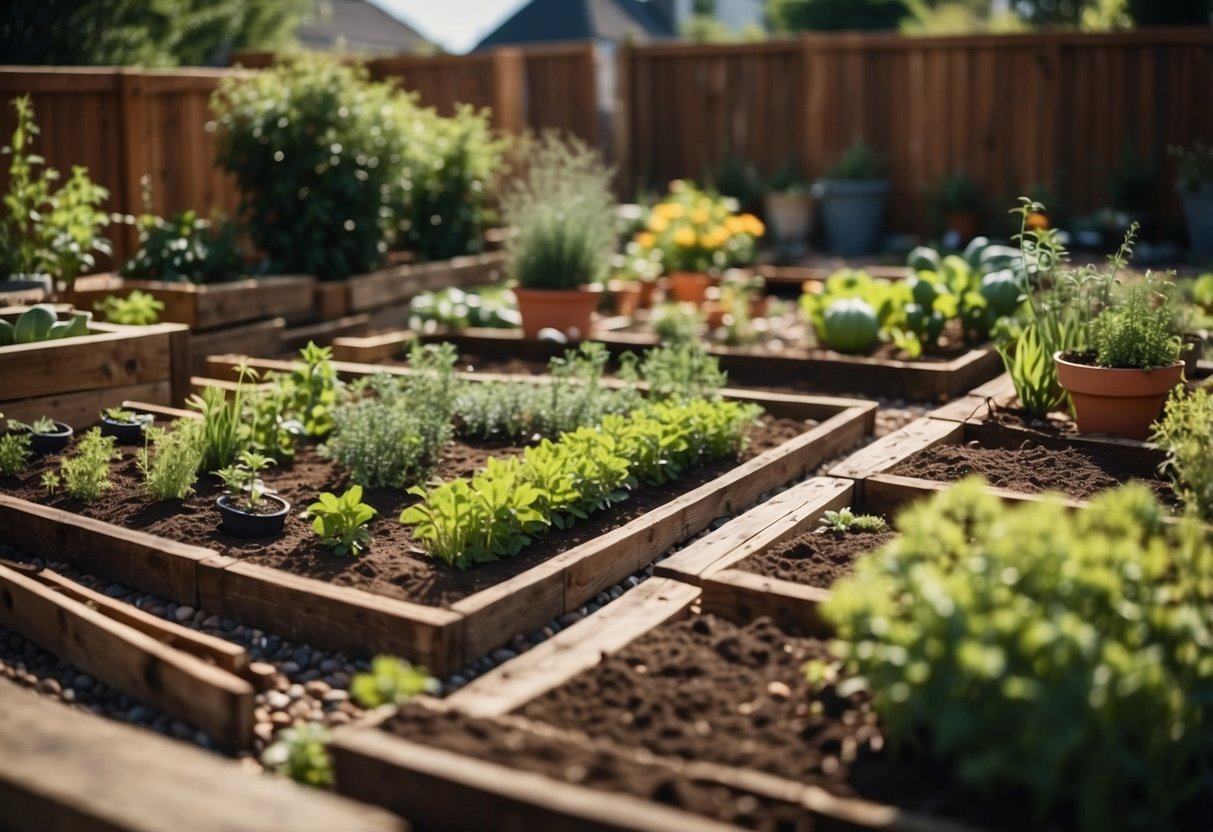
Using railroad ties to build raised vegetable beds is a great DIY project. They’re sturdy and last a long time. Make sure to use old and weathered ties because they have leached out most of their chemicals.
It’s best to line the beds with plastic or fabric to prevent soil contact with the ties. With a little effort, you can create a durable and attractive garden bed.
4) Decorative Pathways

Using railroad ties for garden pathways adds a rustic charm. The ties can define the path’s edges or be used as stepping stones.
Consider creating a wooden walkway with ties, add gravel or mulch between them for a nice touch.
Remember to treat or seal the wood to prevent slipping, especially in rainy or shaded areas (learn more).
5) Stylish Outdoor Benches

Railroad ties can make a unique and rustic bench for your garden. They add character and charm to any outdoor space. You can create a cozy seating area that looks great and is functional.
Using railroad ties for benches is both modern and practical. Their sturdy design ensures longevity, making them a good investment for your garden.
For design inspiration, you might look at ideas on Pinterest. There, you’ll find many creative ways to incorporate these benches into your garden.
6) Creative Retaining Walls

Using railroad ties to build retaining walls is a great way to add character to your garden. They offer a rustic look that blends well with natural surroundings.
You can stack them to create different levels in your landscape, making your garden more interesting. Be sure to secure the ties properly for stability.
Railroad ties are not only sturdy but also versatile. You can combine them with other materials like brick, sand, and gravel for a unique design. Check out more ideas for retaining walls with railroad ties.
7) Charming Planter Borders
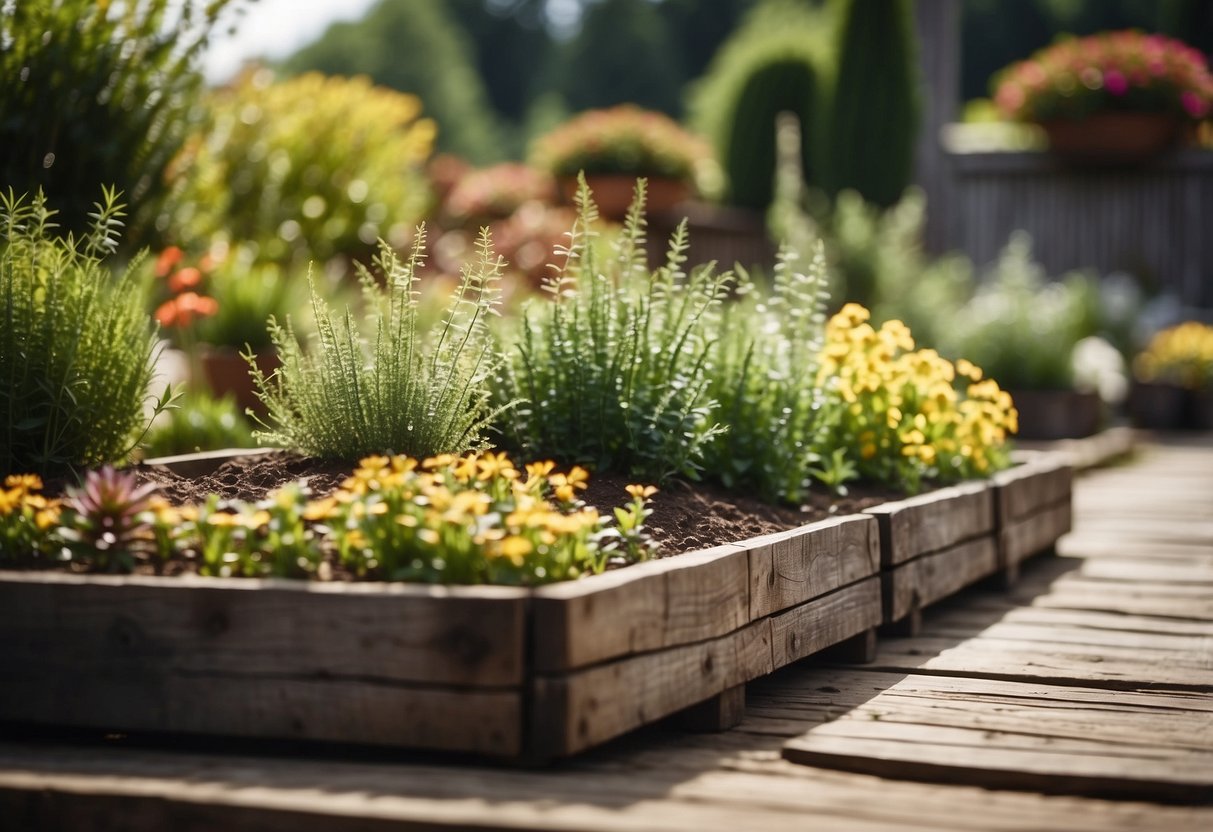
Using railroad ties as borders for your garden planters adds a rustic charm to your space. They provide a natural look that blends well with the greenery.
You can arrange the ties in different patterns to create eye-catching designs. This method is not only practical but also durable.
For more ideas on creating planter borders with railroad ties, check out these creative ideas for planter boxes.
8) Rustic Outdoor Fireplace
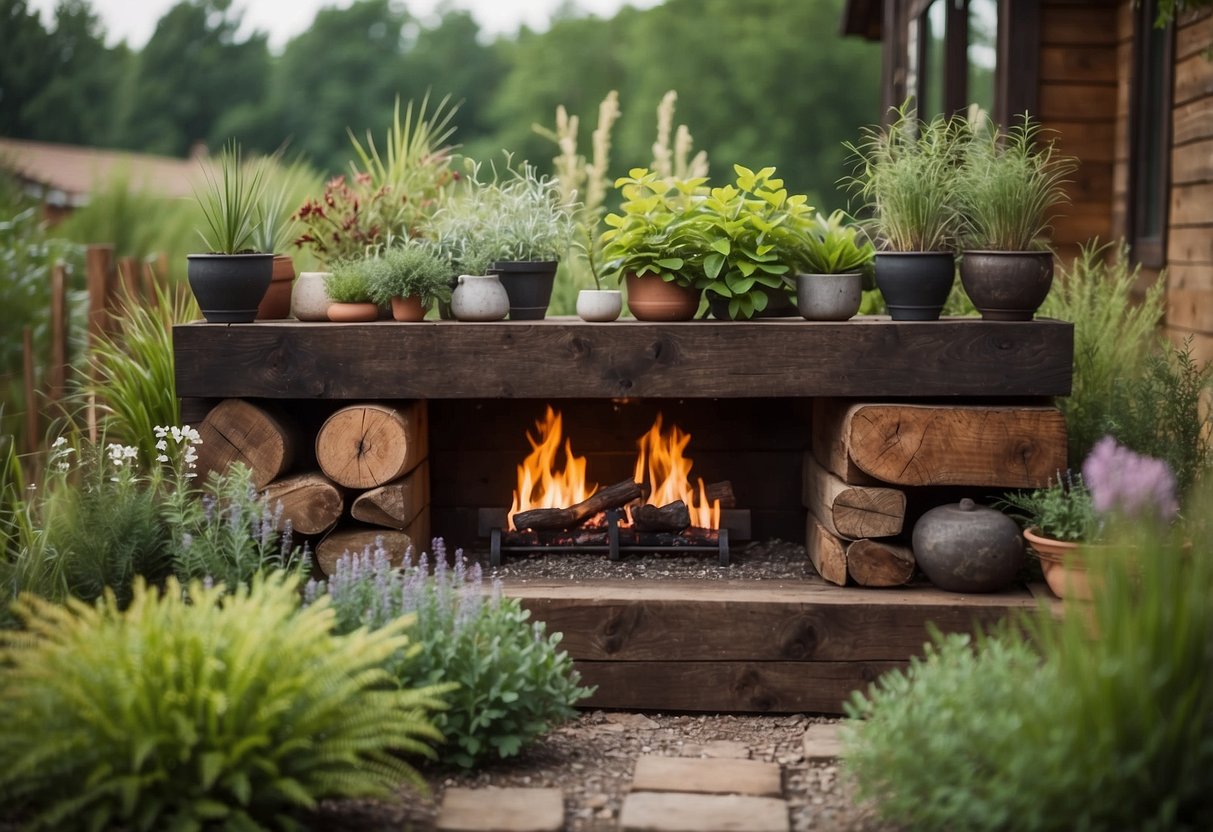
Adding a rustic outdoor fireplace can transform your garden into a cozy retreat. Use railroad ties to frame the fireplace area, giving it a charming and rugged look.
Placing the ties vertically as support posts can create a sturdy structure. You can also use ties horizontally to create seating areas around the fireplace, offering comfortable spots to relax.
Pair it with an iron cauldron fire pit for an old-world feel. This simple touch adds warmth and invites friends and family to gather around.
9) Seating Area Steps
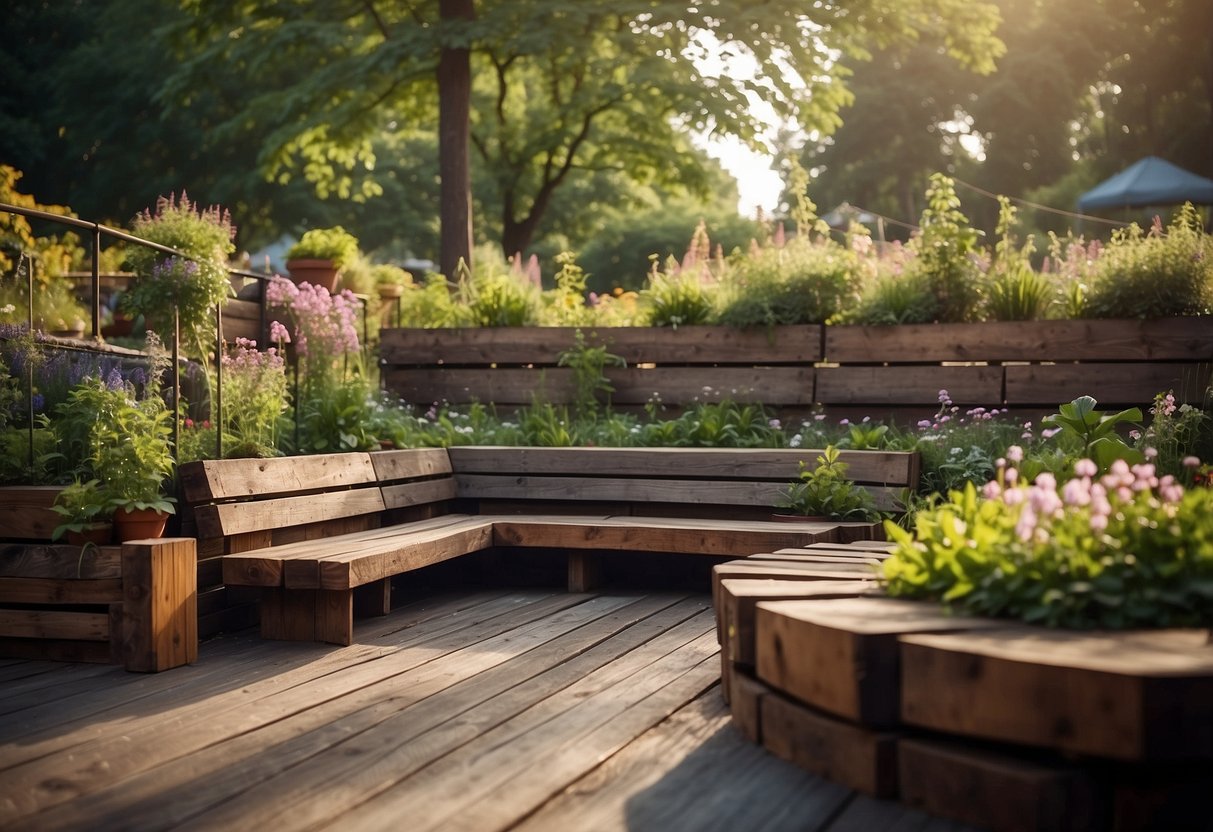
Creating seating area steps with railroad ties adds charm to your garden. Use the ties to build sturdy steps that lead to a cozy seating spot.
Make sure the steps are even and secure for safety. Their rustic look will blend well with natural garden elements.
For more ideas, visit Creative Ideas for Using Railroad Ties for Landscaping.
10) Unique Patio Foundation

Using railroad ties as a foundation for your patio can create a rustic and sturdy base. These ties can be arranged in various patterns to fit the specific shape of your patio.
Railroad ties provide a stable and durable surface, perfect for outdoor furniture. It adds a unique charm to your garden space. Consider combining them with gravel or sand for a more modern look.
Benefits Of Using Railroad Ties In Your Garden
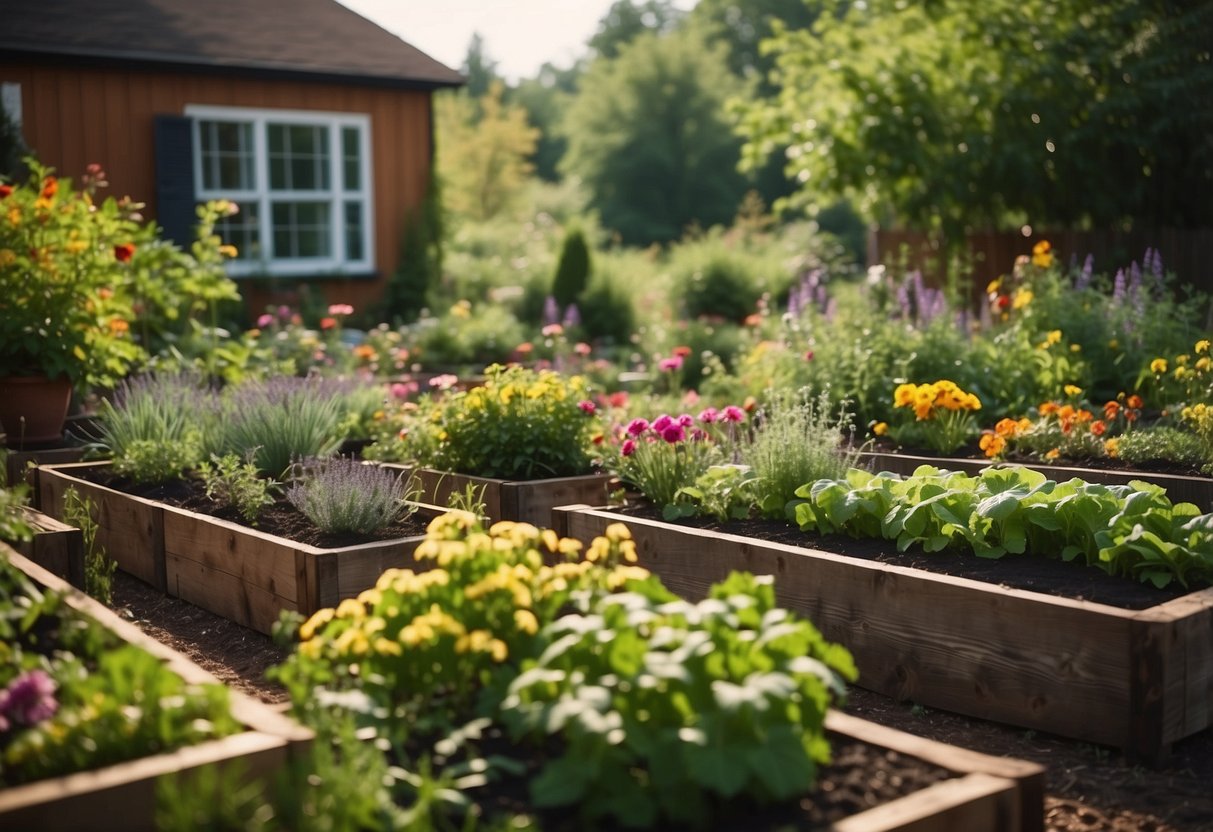
Using railroad ties in your garden can offer significant advantages. They are known for their durability and longevity, and they add a rustic aesthetic to outdoor spaces.
Durability And Longevity
Railroad ties are incredibly durable materials that can withstand harsh weather conditions. Made from dense wood and treated with preservatives, they resist rot and insect damage. This makes them ideal for outdoor use, especially in garden structures like raised beds.
Their long lifespan means you won’t have to replace them frequently. This can save you effort and money in the long run. For example, using old and weathered ties can be particularly beneficial as they have already leached out most of the creosote, reducing any potential chemical concerns.
Overall, their strength and resilience make them a great investment for gardens.
Rustic Aesthetics
Railroad ties add a vintage and rustic charm to your garden. Their weathered appearance blends seamlessly with natural surroundings, enhancing the visual appeal of your space.
You can use these ties to create various features like garden beds, borders, and paths. They also provide a natural look that complements flowers, shrubs, and other garden elements. Their rough texture and earthy tones make them a versatile choice for different garden styles.
By incorporating railroad ties, you can achieve a unique and attractive garden design that stands out and adds character to your outdoor area.
Creative Ways To Use Railroad Ties

Railroad ties offer a unique and durable way to beautify and structure your garden. They can demarcate garden spaces, stabilize soil, and lift your garden beds.
Garden Borders
Using railroad ties as garden borders helps to clearly define different sections of your garden. This can create a neat and organized space. Simply place the ties in a row along the edge of your garden beds.
These ties are sturdy, so they will stay in place for years. You can also paint or stain them to match your outdoor decor.
Railroad ties’ rustic look adds charm to your garden. Plus, they are practical and often cost-effective compared to other border materials.
Retaining Walls
Railroad ties can be great for building retaining walls, especially on sloped terrain. The ties’ robustness helps hold back soil and prevents erosion. Stack the ties and secure them with rebar for a strong structure.
Retaining walls made from railroad ties can add levels to your garden, allowing for more planting space. This setup can create stunning visual interest and is perfect for terraced gardens.
Additionally, you can plant small flowers or shrubs in gaps between ties for a blend of function and beauty. These walls provide both support and a natural aesthetic to your garden.
Raised Garden Beds
Raised garden beds using railroad ties are popular for many reasons. First, they are easy to construct. Simply cut the ties to your desired length and stack them to create the walls of the bed.
Raised beds allow you to control the soil quality and drainage. This is especially useful if your garden soil is poor. The height also makes gardening easier on your back and knees.
Railroad ties are durable, making your raised beds last longer. You can grow a variety of plants in these beds, from vegetables to flowers. This setup maximizes your garden’s productivity and adds an organized look. For more ideas, check out these suggestions.
Safety Tips When Working With Railroad Ties

Wear Protective Gear
Always wear gloves, long sleeves, and safety goggles when handling railroad ties. This helps protect your skin and eyes from splinters, dirt, and chemicals.
Use Proper Tools
You’ll need a sturdy shovel, a saw, and a hammer for your projects. Make sure your tools are in good condition and appropriate for heavy-duty work.
Choose the Right Ties
New railroad ties are treated with chemicals that can be harmful. Opt for used or untreated ties, especially for garden beds and areas where you’ll grow plants.
Handle Creosote With Care
Avoid direct contact with the chemically-treated creosote found on some ties. If possible, line the ties with plastic sheeting to prevent harmful chemicals from leaching into the soil.
Ensure Good Ventilation
When cutting or drilling into railroad ties, work in open, well-ventilated spaces to avoid inhaling dust and fumes.
Lift Safely
Railroad ties are heavy. Always lift with your legs, not your back, and get help for heavier pieces to avoid injury.
Stabilize Your Structures
When building retaining walls or garden edges, use rebar or spikes to secure the ties firmly in place. This prevents them from shifting over time.
Check for Pests
Inspect the ties for termites or other pests before use. You don’t want to introduce bugs into your garden.
By following these tips, you can safely incorporate railroad ties into your garden projects. For more detailed guidance, visit this railroad ties landscaping guide.







